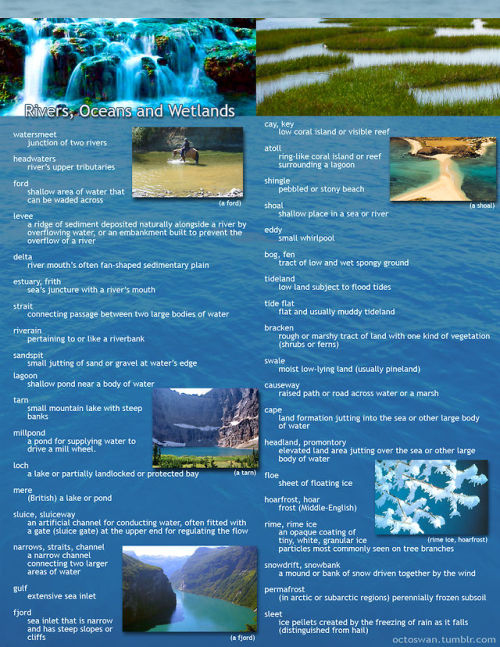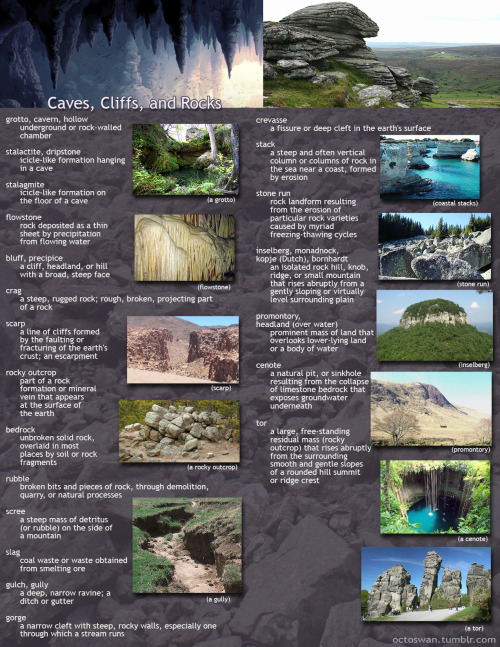This Weekend I Was Told A Story Which, Although I’m Kind Of Ashamed To Admit It, Because Holy Shit
This weekend I was told a story which, although I’m kind of ashamed to admit it, because holy shit is it ever obvious, is kind of blowing my mind.
A friend of a friend won a free consultation with Clinton Kelly of What Not To Wear, and she was very excited, because she has a plus-size body, and wanted some tips on how to make the most of her wardrobe in a fashion culture which deliberately puts her body at a disadvantage.
Her first question for him was this: how do celebrities make a plain white t-shirt and a pair of weekend jeans look chic? She always assumed it was because so many celebrities have, by nature or by design, very slender frames, and because they can afford very expensive clothing. But when she watched What Not To Wear, she noticed that women of all sizes ended up in cute clothes that really fit their bodies and looked great. She had tried to apply some guidelines from the show into her own wardrobe, but with only mixed success. So - what gives?
His answer was that everything you will ever see on a celebrity’s body, including their outfits when they’re out and about and they just get caught by a paparazzo, has been tailored, and the same goes for everything on What Not To Wear. Jeans, blazers, dresses - everything right down to plain t-shirts and camisoles. He pointed out that historically, up until the last few generations, the vast majority of people either made their own clothing or had their clothing made by tailors and seamstresses. You had your clothing made to accommodate the measurements of your individual body, and then you moved the fuck on. Nothing on the show or in People magazine is off the rack and unaltered. He said that what they do is ignore the actual size numbers on the tags, find something that fits an individual’s widest place, and then have it completely altered to fit. That’s how celebrities have jeans that magically fit them all over, and the rest of us chumps can’t ever find a pair that doesn’t gape here or ride up or slouch down or have about four yards of extra fabric here and there.
I knew that having dresses and blazers altered was probably something they were doing, but to me, having alterations done generally means having my jeans hemmed and then simply living with the fact that I will always be adjusting my clothing while I’m wearing it because I have curves from here to ya-ya, some things don’t fit right, and the world is just unfair that way. I didn’t think that having everything tailored was something that people did.
It’s so obvious, I can’t believe I didn’t know this. But no one ever told me. I was told about bikini season and dieting and targeting your “problem areas” and avoiding horizontal stripes. No one told me that Jennifer Aniston is out there wearing a bigger size of Ralph Lauren t-shirt and having it altered to fit her.
I sat there after I was told this story, and I really thought about how hard I have worked not to care about the number or the letter on the tag of my clothes, how hard I have tried to just love my body the way it is, and where I’ve succeeded and failed. I thought about all the times I’ve stood in a fitting room and stared up at the lights and bit my lip so hard it bled, just to keep myself from crying about how nothing fits the way it’s supposed to. No one told me that it wasn’t supposed to. I guess I just didn’t know. I was too busy thinking that I was the one that didn’t fit.
I thought about that, and about all the other girls and women out there whose proportions are “wrong,” who can’t find a good pair of work trousers, who can’t fill a sweater, who feel excluded and freakish and sad and frustrated because they have to go up a size, when really the size doesn’t mean anything and it never, ever did, and this is just another bullshit thing thrown in your path to make you feel shitty about yourself.
I thought about all of that, and then I thought that in elementary school, there should be a class for girls where they sit you down and tell you this stuff before you waste years of your life feeling like someone put you together wrong.
So, I have to take that and sit with it for a while. But in the meantime, I thought perhaps I should post this, because maybe my friend, her friend, and I are the only clueless people who did not realise this, but maybe we’re not. Maybe some of you have tried to embrace the arbitrary size you are, but still couldn’t find a cute pair of jeans, and didn’t know why.
More Posts from Defis-archive and Others
WEBSITES FOR WRITERS {masterpost}
E.A. Deverell - FREE worksheets (characters, world building, narrator, etc.) and paid courses;
NotionByRach - FREEBIES (workbook, notion template, games, challenges, etc.);
Hiveword - Helps to research any topic to write about (has other resources, too);
BetaBooks - Share your draft with your beta reader (can be more than one), and see where they stopped reading, their comments, etc.;
Charlotte Dillon - Research links;
Writing realistic injuries - The title is pretty self-explanatory: while writing about an injury, take a look at this useful website;
One Stop for Writers - You guys... this website has literally everything we need: a) Description thesaurus collection, b) Character builder, c) Story maps, d) Scene maps & timelines, e) World building surveys, f) Worksheets, f) Tutorials, and much more! Although it has a paid plan ($90/year | $50/6 months | $9/month), you can still get a 2-week FREE trial;
One Stop for Writers Roadmap - It has many tips for you, divided into three different topics: a) How to plan a story, b) How to write a story, c) How to revise a story. The best thing about this? It's FREE!
Story Structure Database - The Story Structure Database is an archive of books and movies, recording all their major plot points;
National Centre for Writing - FREE worksheets and writing courses. Has also paid courses;
Penguin Random House - Has some writing contests and great opportunities;
Crime Reads - Get inspired before writing a crime scene;
The Creative Academy for Writers - "Writers helping writers along every step of the path to publication." It's FREE and has ZOOM writing rooms;
Reedsy - "A trusted place to learn how to successfully publish your book" It has many tips, and tools (generators), contests, prompts lists, etc. FREE;
QueryTracker - Find agents for your books (personally, I've never used this before, but I thought I should feature it here);
Pacemaker - Track your goals (example: Write 50K words - then, everytime you write, you track the number of the words, and it will make a graphic for you with your progress). It's FREE but has a paid plan;
Save the Cat! - The blog of the most known storytelling method. You can find posts, sheets, a software (student discount - 70%), and other things;
I hope this is helpful for you!
☕️ buy me a coffee! ☕️
Really says something about the dire state of offerings for men interested in sewing their own clothes that even searching things like "interesting men's clothing patterns" brings up articles with links to four or five whole websites that primarily offer admittedly nice but practically identical patterns for making button-ups and work pants and maybe a varsity/bomber jacket if you're lucky.
(Branching out into historical costuming for everyday wear is like your one shot at variation, and even then, the ratio of men's to women's patterns on every website is frustrating to say the least.)
Patternmakers as a trans man I am begging you. Give me a little more to work with here.
People with low spoons, someone just recommended this cookbook to me, so I thought I’d pass it on.
I always look at cookbooks for people who have no energy/time to do elaborate meal preparations, and roll my eyes. Like, you want me to stay on my feet for long enough to prepare 15 different ingredients from scratch, and use 5 different pots and pans, when I have chronic fatigue and no dishwasher?
These people seem to get it, though. It’s very simple in places. It’s basically the cookbook for people who think, ‘I’m really bored of those same five low-spoons meals I eat, but I can’t think of anything else to cook that won’t exhaust me’. And it’s free!




some fucking resources for all ur writing fuckin needs
* body language masterlist
* a translator that doesn’t eat ass like google translate does
* a reverse dictionary for when ur brain freezes
* 550 words to say instead of fuckin said
* 638 character traits for when ur brain freezes again
* some more body language help
(hope this helps some ppl)
sometimes you need dialogue tags and don't want to use the same four


anyway just a reminder for the myth lovers out there
king arthur was welsh. merlin was welsh. camelot was in wales. the lady and the lake she pops out of; welsh. excalibur; magic inanimate welsh object. etc.
on the way to see family, i drive past a lake that in which is welsh legend, is the last resting place of excalibur.
i’m just saying in my experience a lot of these legends had been so anglo-fied in the past and it’s like, all this cool shit is celtic welsh legend.
Ideas of fatal character flaws? :3
Hi :)
Fatal character flaws
Aristotle calls this ‘Hamartia’ - a tragic flaw or error. It can be anything happening to good or bad characters, even otherwise good character traits and with good intentions that ultimately lead to the character’s demise. They are often traits that don’t neccessarily lead to someone’s downfall, but can if they’re done to an extreme. So think of these otherwise normal ‘flaws’ as extremes.
ignorance - not seeking helpful knowledge
selfishness - not thinking about others
curiosity - getting involved in things they shouldn’t get involved in
impetuousness - being too passionate/ not thinking before acting
pride - not giving in/ not taking help from others
hubris - exaggerated opinion of oneself/ thinking nothing can get to them
lack of self-control - can’t help/stop themself
indecisiveness* - not being able to make decisions
confirmation bias - only taking in information that supports one’s own belief
arrogance - thinking they are superior
Have fun!
- Jana
*Interesting example: Chidi from The Good Place. A morally great character who is so extreme in always trying to make the right choice and therefore not being able to make a decision until it is proven to be right, it basically lands him in hell.
INDEX: Sewing, mending, and crafts
General information:
Fabric types
Basic hand sewing stitches
Hand sewing needles
Knitting 101
Embroidery 101
Visible mending
Crafting on the cheap
How to fix sewing machine issues
Yarn types
Clothing fasteners
Circular knitting
So you want to buy a sewing machine? (by Runeberry)
Sewing vocabulary
Introduction to bead embroidery
Embroidery stitches database (by Chanceyknits)
Yarn bowl alternatives
Tutorials:
How to sew buttons
Disability aid tutorials
How to DIY custom patches
Make some pocket extenders for your pants (by Quixiify)
How to darn holes in woven fabrics (by Delicatefury)
How to mend holes in the thigh area of jeans
How to make buttonholes (machine+hand)
How to make pockets
How to use a seam ripper
Three knitting bind-offs
How to sew a zipper
Bias tape 101
How to thread a needle
Interchangeable circular knitting needles
Patching a hole (by Bronzeagecrafts)
Knitted picot edging on button band
Making paper (by Ofmushroomsandmoss)
How to use dye plants (by Toadstoolgardens)
Game sprites and pixel-based crafts
Hand-sewing: how to start and how to finish
Tailoring masculine clothes with Stylish D
Weaving in ends to finish a knitting project
How to mend torn belt loops
How to knit buttonholes
How to bind a neckline with bias tape
How to hem your jeans
How to sew a rolled hem
Two ways to make your shirt bigger
Tailoring terms explained
How to upsize a sweatshirt with front and back panels
How to make bottlecap pins (by Coveredinredpaint)
18th century buttonholes (by Vinceaddams)
(If a link has a Tumblr username in brackets behind it, the link leads to a post I reblogged from someone else instead of a post I wrote myself.)
teach me?? how to draw?? the action of kissing????



Step 1. yearn
-
 middle-of-town reblogged this · 1 week ago
middle-of-town reblogged this · 1 week ago -
 vongeek reblogged this · 1 week ago
vongeek reblogged this · 1 week ago -
 opposite-of-icarus reblogged this · 1 week ago
opposite-of-icarus reblogged this · 1 week ago -
 opposite-of-icarus liked this · 1 week ago
opposite-of-icarus liked this · 1 week ago -
 urfrndlyneighbrhoodqueer liked this · 1 week ago
urfrndlyneighbrhoodqueer liked this · 1 week ago -
 unlikelyapricot liked this · 1 week ago
unlikelyapricot liked this · 1 week ago -
 meralunapeacekeeperin liked this · 1 week ago
meralunapeacekeeperin liked this · 1 week ago -
 obscurum-of-aquora reblogged this · 2 weeks ago
obscurum-of-aquora reblogged this · 2 weeks ago -
 herbouquetchaosworld reblogged this · 2 weeks ago
herbouquetchaosworld reblogged this · 2 weeks ago -
 positivephoton liked this · 2 weeks ago
positivephoton liked this · 2 weeks ago -
 smoothgator reblogged this · 2 weeks ago
smoothgator reblogged this · 2 weeks ago -
 smoothgator liked this · 2 weeks ago
smoothgator liked this · 2 weeks ago -
 raisingcainpleasantly reblogged this · 2 weeks ago
raisingcainpleasantly reblogged this · 2 weeks ago -
 born-to-roam liked this · 2 weeks ago
born-to-roam liked this · 2 weeks ago -
 ortie-pnk reblogged this · 2 weeks ago
ortie-pnk reblogged this · 2 weeks ago -
 humblebumblebutt reblogged this · 2 weeks ago
humblebumblebutt reblogged this · 2 weeks ago -
 humblebumblebutt liked this · 2 weeks ago
humblebumblebutt liked this · 2 weeks ago -
 prince-hyacinthus reblogged this · 2 weeks ago
prince-hyacinthus reblogged this · 2 weeks ago -
 prince-hyacinthus liked this · 2 weeks ago
prince-hyacinthus liked this · 2 weeks ago -
 blame-my-muses reblogged this · 2 weeks ago
blame-my-muses reblogged this · 2 weeks ago -
 windamp reblogged this · 2 weeks ago
windamp reblogged this · 2 weeks ago -
 cavedd-in reblogged this · 2 weeks ago
cavedd-in reblogged this · 2 weeks ago -
 calicotomcat reblogged this · 2 weeks ago
calicotomcat reblogged this · 2 weeks ago -
 marcignar reblogged this · 2 weeks ago
marcignar reblogged this · 2 weeks ago -
 bumblebeepancake liked this · 2 weeks ago
bumblebeepancake liked this · 2 weeks ago -
 mydearlonelygrave reblogged this · 2 weeks ago
mydearlonelygrave reblogged this · 2 weeks ago -
 2clementines reblogged this · 2 weeks ago
2clementines reblogged this · 2 weeks ago -
 purgatoryorbust liked this · 2 weeks ago
purgatoryorbust liked this · 2 weeks ago -
 lizhug liked this · 2 weeks ago
lizhug liked this · 2 weeks ago -
 uniquephilosopherwombat reblogged this · 2 weeks ago
uniquephilosopherwombat reblogged this · 2 weeks ago -
 lavalsedumal reblogged this · 2 weeks ago
lavalsedumal reblogged this · 2 weeks ago -
 the-patchwork-grove liked this · 2 weeks ago
the-patchwork-grove liked this · 2 weeks ago -
 k2e4 reblogged this · 2 weeks ago
k2e4 reblogged this · 2 weeks ago -
 realta-the-demigod liked this · 2 weeks ago
realta-the-demigod liked this · 2 weeks ago -
 fortivil liked this · 2 weeks ago
fortivil liked this · 2 weeks ago -
 yourlocalacecase liked this · 2 weeks ago
yourlocalacecase liked this · 2 weeks ago -
 thaddeusgoose reblogged this · 2 weeks ago
thaddeusgoose reblogged this · 2 weeks ago -
 thaddeusgoose liked this · 2 weeks ago
thaddeusgoose liked this · 2 weeks ago -
 kuramakitsune9 reblogged this · 2 weeks ago
kuramakitsune9 reblogged this · 2 weeks ago -
 kuramakitsune9 liked this · 2 weeks ago
kuramakitsune9 liked this · 2 weeks ago -
 bibbitybobbityboogaloo reblogged this · 2 weeks ago
bibbitybobbityboogaloo reblogged this · 2 weeks ago -
 garr-von-glongulus liked this · 2 weeks ago
garr-von-glongulus liked this · 2 weeks ago -
 godofbooks reblogged this · 2 weeks ago
godofbooks reblogged this · 2 weeks ago -
 godofbooks liked this · 2 weeks ago
godofbooks liked this · 2 weeks ago -
 thetreasurechest liked this · 2 weeks ago
thetreasurechest liked this · 2 weeks ago -
 battyluciddreamer reblogged this · 2 weeks ago
battyluciddreamer reblogged this · 2 weeks ago -
 battyluciddreamer liked this · 2 weeks ago
battyluciddreamer liked this · 2 weeks ago -
 mellowcloudlight liked this · 2 weeks ago
mellowcloudlight liked this · 2 weeks ago -
 aminitacarrow reblogged this · 2 weeks ago
aminitacarrow reblogged this · 2 weeks ago -
 aminitacarrow liked this · 2 weeks ago
aminitacarrow liked this · 2 weeks ago





